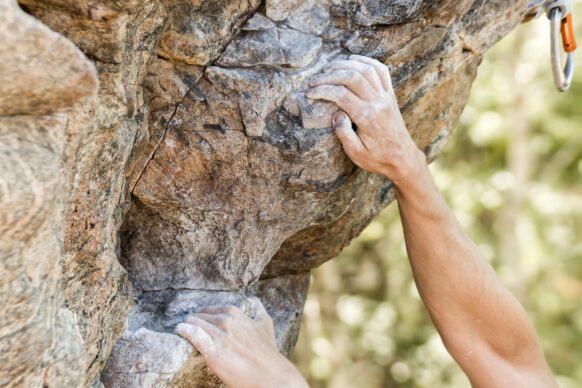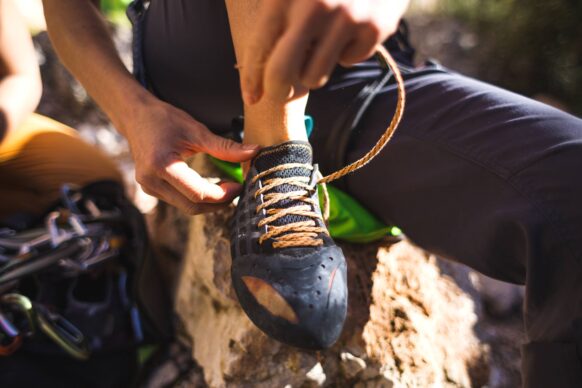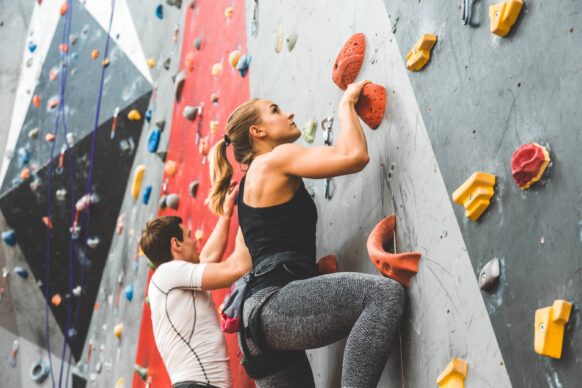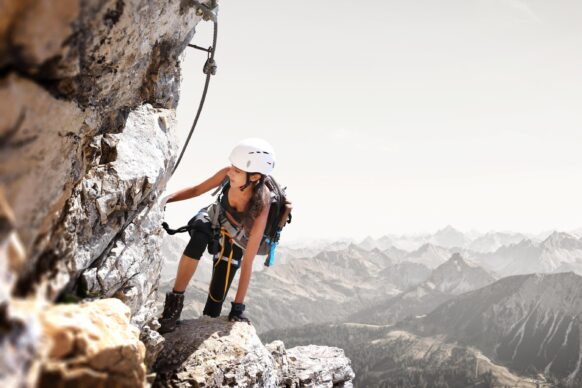by Bo Baradar-Heristchian, DPT, PSIA, AASI, WSI
It’s difficult to avoid the dreaded climber’s hunchback. Years of climbing takes a toll on the body. You get lazy while belaying and round your shoulders. You sit slumped while watching your friends boulder. You slouch in your chair while working at your desk. The spine begins to curve, the shoulders round forward and you start taking on the appearance of Quasimodo. But fear not! The hunchback is avoidable with some simple mobility, strength and movement exercises.
Before you learn how to treat the climber hunchback, you must identify if you have it. So how do you know whether or not you have a climber hunchback? First, it’s important to know that the thoracic spine has a natural curvature. Below, the image towards the left represents the typical curvature of the spine and the image to the right represents excessive spinal curve, known as kyphosis.

The degree of thoracic spine kyphosis can be visualized and measured with an X-ray. But why expose yourself to unnecessary radiation or pay hundreds of dollars when you can perform a simple assessment on your own? To determine if you have thoracic kyphosis, stand with your back against a wall and attempt to press the back of your head into the wall while keeping your chin level to the ground. If you have excessive thoracic kyphosis, it may be difficult for you to press your head against the wall without lifting your chin and extending your neck.
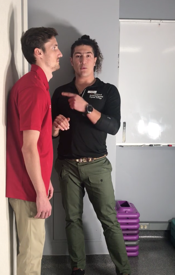
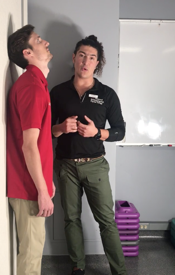
Self-Assessment of Climber’s Hunchback
If you have identified yourself as having thoracic kyphosis, or a climbing hunchback, or if you’re afraid of developing one, there’s a series of exercises that you can perform to counteract it.
Unloading
The first stage of rehabilitation is about taking the stress off of the tissue. A hunched posture can stress muscles in the neck and shoulder, and if your muscles are not strong enough to reverse the hunched posture, you can temporarily use a support or brace to facilitate the process of unloading the tissue and spine. Below is an example of how to use a brace to pull your shoulders back while sitting or standing throughout the day.
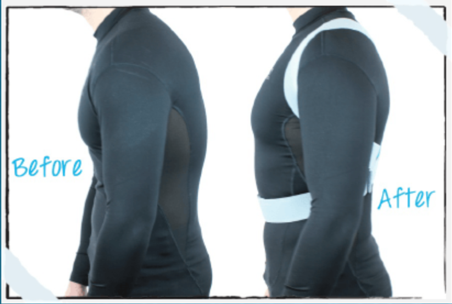
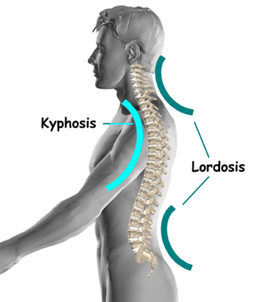
http://www.spinesurgery-wecareindia.com/Kyphosis/bracingt_treatment_kyphosis.html
Stay tuned for next 3 parts to this series: mobility, strengthening and application. Please don’t hesitate to reach out with questions or to schedule an appointment!
